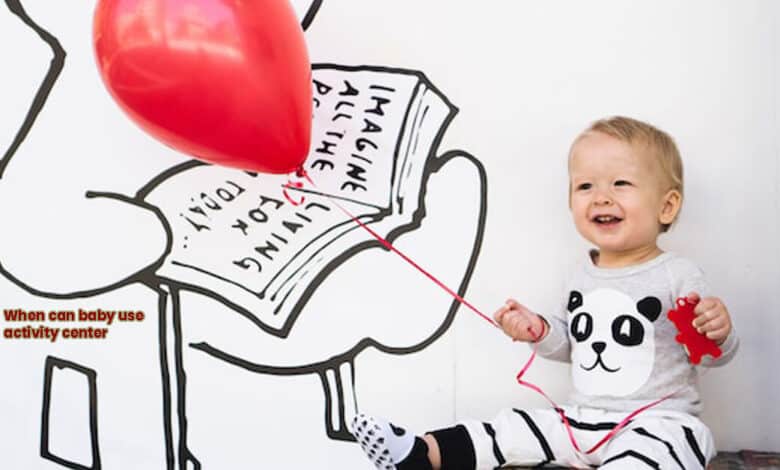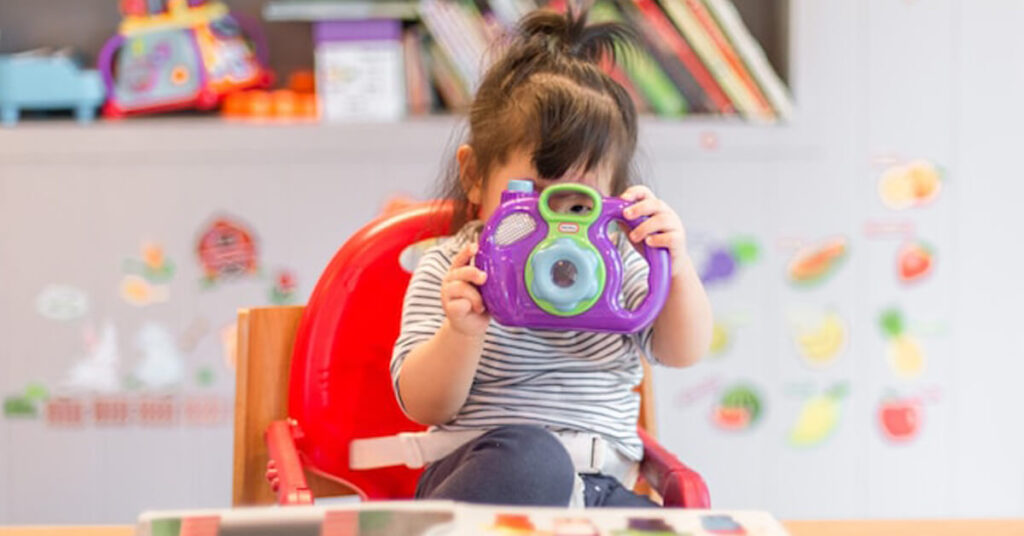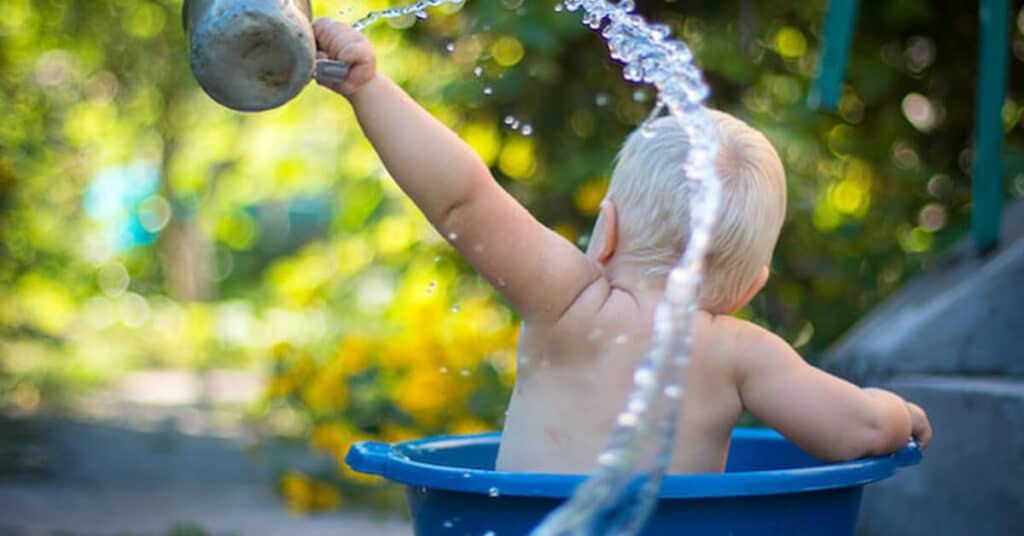The Perfect Activity Center for Your Baby: When and How to Introduce Engaging Playtime
When can baby use activity center

Introduction
Activity centers play a crucial role in a baby’s development, offering a stimulating environment for learning and exploration. Understanding the age range suitable for When can baby use activity center centers is key to ensuring your baby benefits from these engaging playtime options.
Newborn Stage: Preparing for Future Playtime
Setting up a safe environment for your newborn is essential, even before they are ready for activity centers. Consider the following:
- Place your baby’s crib away from any potential hazards, such as cords or curtains.
- Ensure your baby’s sleeping area is free from loose blankets or pillows to prevent suffocation risks.
Monitoring your baby’s growth and milestones is crucial during the newborn stage. Keep track of their physical and cognitive developments, as these will indicate their readiness for activity centers in the future.
The Right Age: Determining When Your Baby Can Start Using an Activity Center
Knowing when your baby is physically and cognitively ready for an activity center is essential to provide them with an enjoyable and safe experience.
Physical readiness indicators for activity center usage include:
- The ability to hold their head steadily without support.
- Good control of upper body muscles, particularly the neck and core.
Cognitive milestones impacting activity center introduction include:
- Improved hand-eye coordination, allowing them to grasp objects.
- Increased alertness, curiosity, and interest in their surroundings.

Selecting the Ideal Activity Center for Your Baby
Choosing the right activity center is vital to ensure your baby’s engagement and development. Consider the following key features:
- Adjustable height settings to accommodate your baby’s growth.
- Interactive toys and components that encourage exploration.
- Removable and washable seat covers for easy cleaning.
Safety should always be a top priority when selecting an activity center. Look for these safety measures:
- Sturdy construction to prevent tipping or collapsing.
- Secure and reliable locking mechanisms for the seat.
- Meeting safety standards and certifications for baby products.
Preparing the Environment for the Activity Center
Designing a dedicated play area for your baby contributes to a positive activity center experience. Follow these steps:
- Choose a spacious and well-lit area to set up the activity center.
- Place a soft and clean playmat underneath for added comfort and protection.
- Organize nearby shelves or storage bins to keep toys easily accessible.
Ensure the play area is clutter-free and baby-friendly by:
- Removing any small objects that could pose a choking hazard.
- Securing loose cables or cords to prevent accidents.
- Creating a calm and soothing atmosphere to foster concentration and engagement.
Introducing the Activity Center
Introduce the activity center gradually to allow your baby to adapt and become familiar with this new playtime experience. Follow these strategies:
- Begin with short intervals of playtime, gradually increasing the duration as your baby grows more comfortable.
- Encourage exploration and engagement by interacting with your baby and demonstrating how the activity center’s toys and features work.
- Allow your baby to set the pace and follow their cues for when they are ready to explore more independently.

Benefits of Activity Centers for Baby’s Development
Using activity centers offers numerous benefits for your baby’s development:
- Enhanced motor skills through play: The various toys and activities in the center promote reaching, grasping, and coordination.
- Promoted sensory development and coordination: The inclusion of different textures, sounds, and colors stimulates your baby’s senses.
- Stimulated cognitive and emotional growth: Engaging with the activity center fosters problem-solving skills, memory retention, and emotional expression.
Activity Center Dos and Don’ts for Baby’s Safety
To ensure your baby’s safety during playtime, follow these dos and don’ts:
- DO supervise and monitor your baby closely while they are using the activity center.
- DO place the activity center on a stable and level surface to prevent tipping.
- DON’T leave your baby unattended in the activity center, especially if they can move or roll over independently.
Engaging Activities and Toys for the Activity Center
Provide your baby with age-appropriate toys to stimulate learning and play in the activity center. Consider these options:
- Soft fabric books with textured pages for sensory exploration.
- Colorful stacking cups for hand-eye coordination and problem-solving.
- Musical toys that produce sound when pressed or shaken.
Incorporating interactive elements ensures enhanced engagement:
- Attach mobiles or hanging toys above the activity center for visual stimulation.
- Rotate toys periodically to maintain your baby’s interest and curiosity.
Balancing Activity Center Usage with Other Developmental Activities
While the activity center is beneficial, it is essential to maintain a well-rounded developmental routine for your baby. Consider these points:
- Engage in tummy time sessions to strengthen your baby’s neck and back muscles.
- Encourage crawling and exploring their surroundings to promote mobility and spatial awareness.
Avoid over-reliance on the activity center by diversifying playtime activities:
- Read books together to strengthen language skills.
- Engage in interactive play with simple toys that encourage imaginative thinking.
Signs of Baby Outgrowing the Activity Center
Recognizing when your baby is ready for the next stage is crucial. Look for these indicators:
- Physical indicators of readiness may include trying to climb out of the activity center or consistently reaching beyond its boundaries.
- Cognitive indicators may include disinterest or boredom with the current toys and activities.
Transition your baby to other age-appropriate play options, such as a playpen or push toys, to support their ongoing developmental needs.
Cleaning and Maintaining Your Baby’s Activity Center
Maintaining a clean and hygienic activity center is vital for your baby’s safety. Follow these cleaning routines:
- Regularly wipe down the activity center’s toys and surfaces with mild soap and water.
- Disinfect any toys that come into contact with your baby’s mouth.
- Wash the seat cover according to the manufacturer’s instructions to remove any spills or stains.
To extend the lifespan of the activity center:
- Store it in a dry and cool place when not in use to prevent damage.
- Check for loose parts or signs of wear regularly and make any necessary repairs promptly.
Activity Center Recommendations and Reviews
Consider these expert recommendations for top-rated activity centers:
- [Brand A]: Known for its adjustable height settings and interactive features, Brand A’s activity center offers versatility and engagement.
- [Brand B]: With a focus on safety and durability, Brand B’s activity center provides a secure and stimulating environment for play.
Real-life experiences shared by parents can also provide valuable insights into the pros and cons of specific activity centers.
Activity Center Alternatives for Unique Circumstances
Sometimes, an activity center may not be suitable for your baby’s specific needs or preferences. Consider these alternatives:
- Baby bouncers or swings: Provide similar interactive experiences while allowing for gentle movement.
- Sensory play mats or gyms: Promote sensory exploration through different textures and stimuli.
Be creative and find solutions that cater to your baby’s individuality and developmental requirements.
Common Concerns: Addressing Safety and Developmental Questions
Safety and developmental concerns are common among parents considering an activity center. Address these questions:
- Is an activity center safe for my baby’s physical development? Activity centers, when used under supervision and following safety guidelines, provide a safe environment for your baby’s blossoming physical skills.
- How much time should my baby spend in the activity center daily? It is recommended to limit activity center usage to 20-30 minutes per session to prevent overstimulation and encourage a well-rounded routine.

Frequently Asked Questions about Activity Centers for Babies
Addressing common queries regarding activity centers:
- Can a baby use an activity center before they can sit up independently? Some activity centers offer reclined seat positions suitable for younger babies who haven’t yet achieved independent sitting.
- Are there any age restrictions for activity center usage? Most activity centers are suitable for babies from around 4-6 months when they have achieved better head and upper body control.
Summary: Enriching Your Baby’s Journey with a Thoughtful Introduction to Activity Centers
Introducing your baby to an activity center can be a rewarding experience, promoting their development and engagement. Recap the benefits and considerations:
- Activity centers enhance motor skills, sensory development, cognitive growth, and emotional expression.
- Creating a nurturing and stimulating environment, along with proper supervision, ensures a positive and safe playtime experience for your baby.
Remember, while activity centers are valuable tools, they should be used in conjunction with a variety of other developmental activities to foster holistic growth and learning.

